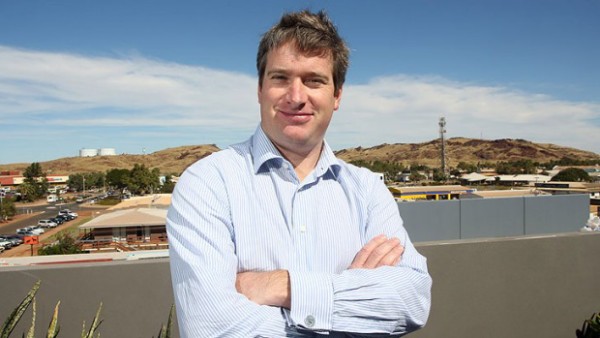VISA rules would be relaxed to allow 25,000 international migrants into WA’s northwest over the next 20 years, under a proposal by the state’s highest profile country politician.
Brendon Grylls told PerthNow he wants to “take the lid off” population growth in the Pilbara by encouraging an influx of overseas arrivals from Australia’s major trading partners in Asia.
The Pilbara MP believes half of the planned future population growth for the Barnett Government’s Pilbara Cities vision will need to come from international migration.
Rather than expecting eastern states families to move to Karratha or Port Hedland, he wants “large scale migration” from China, India, South Korea, Indonesia and Japan.
It comes as leading demographer Bernard Salt suggested a “nation-building project” – such as a new military base – could transform Karratha into a city of 100,000 people by mid-century.
Mr Grylls challenged the Abbott Government to match its rhetoric about developing the north with “real policy decisions”, calling for specific visa categories to encourage the population of Northern Australia.
He said now that rents had been “normalised” in the Pilbara there was a “great opportunity” for international families to meet the demand for small businesses, such as restaurants and cafes.
“Everyone talks about wanting this to happen – you politically have to do things and visa categories that support that vision is one thing the Commonwealth could really do,” Mr Grylls said.
“I’m prepared to put a number on it and, as the member for Pilbara, I would like to see 25,000 people from overseas migrate into the Pilbara in the next 20 years.”
Karratha and Pilbara will each be home to 50,000 people by 2035 under the Pilbara Cities plan, which has received hundreds of millions of dollars through Royalties for Regions.
Mr Grylls, the scheme’s architect, said opening the Pilbara to international migration from Australia’s northern neighbours in Asia was now his top priority.
“That international migration should come from our trading partners that we are building very, very strong relationships with: China, India, Korea, Indonesia, Japan,” he said.
“It’s a relationship based on our natural resources going to help them grow and modernise their economies. It makes eminent sense that we should work very closely with them to have some of the people that wish to come to Australia, to come to the northwest.
“We can take substantial population growth, we’re planned for it, we’re ready for it and we know our population for the scale of the towns is low.”
A “Designated Area Migration Agreement” is being trialed in Darwin to allow small businesses employ semi-skilled workers from overseas, with the Pilbara Regional Council lobbying for a similar deal in the Pilbara.
Mr Salt, head of KPMG Demographics, this week told a forum into Karratha’s future that it was not unrealistic for the city to be home to 100,000 people by the middle of the century.
He made the case for a nationally-funded project, such as a defence base equivalent to the Army’s Lavarack Barracks in Townsville, Queensland, to diversify the region’s economy.
“It needs to have a sufficient critical mass where there are a range of services that people are happy to live in that town for their entire life, rather than coming in at 24 and leaving at 54 because there’s nothing in the town,” he said.
“You get 100,000 people and services associated with that, then the town has greater cultural and lifestyle depth. Therefore people are more likely to hang around and you have a reservoir of labour that you can tap into when you are developing iron ore fields, logistic centres or military bases – rather than relying for the next century on people flying in and flying out.”
Nationals Leader Terry Redman, Minister for Regional Development, said a major military base in Pilbara made strategic sense.
“In 2017, when Wheatstone and Gorgon come on stream, the Pilbara as a region will be responsible for 40 per cent of the nation’s exports. Now, you tell me that doesn’t deserve a defence presence,” he said.
“There is major defence presence on the east coast and I think there is a very strong argument to say this is an exposed part of the nation’s defence efforts and given it’s so critically important and strategic to us as a nation … then that deserves more attention than what it’s getting.”
In January, the Pilbara Development Commission will release its Pilbara Regional Investment Blueprint, a road map for social and economic development of the region.
It plans for 200,000 people and the development of new industries around algae, food production, marine emergency response and renewable energies such as solar power.
PDC acting CEO Felicity Gilbert said the blueprint focused on “transformational projects”, including a proposed marine maintenance and fabrication complex.
She said major challenges ahead include the creation of an interconnected energy grid and simplifying the region’s complex land tenure system.
“We have a potential to develop the capacity to produce a lot of clean, green power and in the first instance that’s about getting power around the Pilbara but ultimately in 2050 we could be looking at exporting power into Asia,” Ms Gilbert said.
Source: PerthNow
